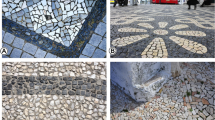Abstract
This paper focuses on archaeological curation repositories and their role as more than mere storage facilities. Archaeological collections are increasingly marshaled to confront anxieties about a seemingly ‘vanishing past’ and to arrest its disappearance. In Maryland, the state has invested heavily in a ‘state-of-the-art’ facility to protect and study archaeological collections in its custody. The facility has become the proxy for the collections and a form of cultural property itself, becoming part of the ongoing process that serves to recast this portion of the state as a place rooted in the past.
Résumé
Cet article met l’accent sur les dépositaires de sauvegarde archéologique et leur rôle bien supérieur à de simples entrepôts de stockage. Les collections archéologiques sont, de plus en plus, réunies pour assurer leur préservation et empêcher leur disparition. Dans le Maryland l’état a investi massivement dans un entrepôt de pointe destiné à protéger et étudier les collections archéologiques placées sous sa garde. L’entrepôt est devenu le mandataire des collections et constitue une forme de propriété culturelle par lui-même, en constituant une partie du processus en cours qui sert à refondre cet ensemble en tant que lieu prenant racine dans le passé.
Resumen
Este trabajo trata de los depósitos de custodia arqueológica y su función como mucho más que simples almacenes. Cada vez es más común presentar las colecciones arqueológicas como un medio para aliviar la angustia por un pasado que parece esfumarse y para detener su desaparición. En Maryland, el estado ha invertido considerables sumas de dinero en instalaciones de tecnología punta donde proteger y estudiar las colecciones arqueológicas que tiene bajo su custodia. Esta instalación se ha convertido en el estandarte de las colecciones y constituye por sí sola una forma de propiedad cultural que forma parte integrante del proceso continuo orientado a cambiar la imagen de esta parte del estado y presentarla como un lugar con fuertes raíces históricas.






Similar content being viewed by others
References Cited
Arens, W. (1979) The Man-Eating Myth: Anthropology and Anthropophagy. Oxford University Press, New York
Belk, R.W. (1995) Collecting in a Consumer Society. Routledge, New York
Belk, R.W. (1990) The Role of Possessions in Constructing and Maintaining a Sense of the Past. Advances in Consumer Research 17: 669–676
Benden, D. 2005. The Curation Crisis: Moving Toward a Solution: A Guide for New Repositories. Unpublished M.A. Thesis, Museum and Field Studies Program, University of Colorado, Boulder
Brown, G.J., C.L. Alston, E.E. Chaney, C.J. Cox, J.A. King, Al Luckenbach, D.F. Muraca, and D.J. Pogue 2006. A Comparative Archaeological Study of Colonial Chesapeake Culture. www.chesapeakearchaeology.org; Accessed August 20, 2006
Boym, S. (2001) The Future of Nostalgia. Basic Books, New York
Callcott, G. (1985) Maryland and America, 1940–1980. Johns Hopkins University Press, Baltimore
Crawford, M. (1992) The World in a Shopping Mall. In M. Sorkin (ed.), Variations on a Theme Park: The New American City and the End of Public Space (pp. 3–30). Hill and Wang, New York
Deloria, V. (1969) Custer Died for Your Sins: An Indian Manifesto. MacMillan, New York
Dorst, J.D. (1989) The Written Suburb: An American Site, an Ethnographic Dilemma. University of Pennsylvania Press, Philadelphia
Downs, A. (1994) New Visions for Metropolitan America. Brookings Institution Press, Washington, DC
Elsner, J., R. Cardinal (editors) (1994) The Cultures of Collecting. Harvard University Press, Cambridge
Green, H. 1991. Looking Backward to the Future: The Colonial Revival and American Culture. In: Creating a Dignified Past: Museums and the Colonial Revival, edited by G.L. Rossano, pp. 1–16. Rowman and Littlefield Publishers
Handler, R. (2003) Visiting Scholar Lecture, Department of Anthropology and Sociology. St. Mary’s College of Maryland, St. Mary’s City
Handler R., E. Gable (1997) The New History in an Old Museum: Creating the Past at Colonial Williamsburg. Duke University Press, Durham, North Carolina
Hinsley, C.M. Jr. 2000. Digging for Identity: Reflections on the Cultural Background of Collecting. In Repatriation Reader: Who Owns American Indian Remains? edited by D.A. Mihesuah, pp. 37–57. University of Nebraska Press.
Hodder, I. (1999) The Archaeological Process: An Introduction. Blackwell, Oxford, UK
Jackson, K.T. (2000) Gentleman’s Agreement: Discrimination in Metropolitan America. In B. Katz (editor) Reflections on Regionalism (pp. 185–217). Brookings Institution Press, Washington, DC
Jefferson Patterson Park and Museum [JPPM] 2008. History. http://www.jefpat.org/2history.htm; Accessed April 25, 2008
Kelso, W.M. (2006) Jamestown: The Buried Truth. University of Virginia Press, Charlottesville
King, J.A. (2002) How the Past Became a Place. Northeast Historical Archaeology 30–31:113–128
King, J.A. 2004. Developing a Records Database for the State of Maryland’s Archaeological Collections. Proposal to the National Endowment for the Humanities, Division of Preservation and Access. Ms. on file, Maryland Archaeological Conservation Laboratory, St. Leonard
King, J.A. 2005. Collecting Utopia: The Role of Archaeology in Narrating the Past. Seminar Paper, St. Mary’s College of Maryland, St. Mary’s City, MD.
King, J.A. (2007) Review of William Kelso’s Jamestown: The Buried Truth. Journal of Middle Atlantic Archaeology 23:146–150
King, J.A., K.L. Priddy, and E.E. Chaney 2004. Archaeological Collections in Maryland: A Guide. Maryland Archaeological Conservation Laboratory, St. Leonard. Also available electronically at http://www.jefpat.org/NEHWeb/Assets/Documents/HomePage/Final%20Introduction.htm; Accessed May 1, 2008
Kohl, P., C. Fawcett (eds) (1995) Nationalism, Politics, and the Practice of Archaeology. Cambridge University Press, New York
Kunstler, H. (1993) The Geography of Nowhere: The Rise and Decline of America’s Man-Made Landscape. Simon and Schuster, New York
Lempert, M.I. (editor) (2006) SlackWater: The Rural Issue. St. Mary’s College of Maryland, St. Mary’s City, MD
Marling, K.A. (1988) George Washington Slept Here: Colonial Revivals and American Culture, 1876–1986. Harvard University Press, Cambridge
Meskell, L. (editor) (1998) Archaeology Under Fire: Nationalism, Politics and Heritage in the Eastern Mediterranean and Middle East. Routledge, London
Moe R., C. Wilkie (1997) Changing Places: Rebuilding Community in the Age of Sprawl. Henry Holt and Company, New York
Muensterberger, W. (1994) Collecting: An Unruly Passion: Psychological Perspectives. Princeton, NJ, Princeton University Press
Noël Hume, I. (1969) Historical Archaeology. Alfred A. Knopf, New York
Oliver, J.E. (2001) Democracy in Suburbia. Princeton University Press, Princeton
Partlow, J.M. 2005. Unearthed Shells Hold Clues to Lives of 18th-Century Slaves. The Washington Post Southern Maryland Extra, July 31, 2005, pp. 3, 12
Patterson, M.M.B. (2006) My American Century: The Memoirs of Mary Marvin Breckinridge Patterson. The Marpat Foundation, Washington, DC
Pearce, S.M. (1992) Museums, Objects and Collections: A Cultural Study. Leicester University Press, Leicester
Poor, P.J., and R.M. Brule 2005. Socio-economic Impacts of Open Space and Agricultural Land Preservation. Benefits and Costs of Resource Policies Affecting Public and Private Land. Western Regional Research Publication W-1133
Potter, P.B. Jr. (1991) What’s the Use of Plantation Archaeology? Historical Archaeology 25(3): 94–107
Ross, A. (1999) The Celebration Chronicles: Life, Liberty, and the Pursuit of Property Value in Disney’s New Town. Ballantine Books, New York
Silberman, N. (1982) Digging for God and Country: Exploration, Archeology, and the Secret Struggle for the Holy Land, 1799–1917. Alfred A. Knopf, New York
Slotkin, R. (1998) The Fatal Environment: The Myth of the Frontier in the Age of Industrialization 1800–1890. University of Oklahoma Press, Norman
Sotterley Plantation, Inc. 2008. History. http://www.sotterley.com/history.htm#people; Accessed April 25, 2008
Stewart, S. (1984) On Longing: Narratives of the Miniature, the Gigantic, the Souvenir, the Collection. Johns Hopkins University Press, Baltimore
Surowiecki, J. 1997. Suburbia: Is it so Bad to be Banal? The Atlantic Online (http://www.theatlantic.com/unbound/graffiti/ag970402.htm, April 2, 1997); Accessed April 1, 2008
Thomas, D.H. (2000) Skull Wars: Kennewick Man, Archaeology, and the Battle for Native American Identity. Basic Books, New York
Yas, J. 2000. (Re)designing the City of David: Landscape, Narrative, and Archaeology in Silwan. Jerusalem Quarterly File 7
Wikipedia. 2006. http://en.wikipedia.org/wiki/Government_Warehouse; Accessed August 20, 2006
Wilson R.G., S. Eyring, K. Marotta (2006) Re-creating the American Past: Essays on the Colonial Revival. Charlottesville, University of Virginia Press
Acknowledgements
I am grateful to Charles Cobb and Diana Loren for inviting me to participate in the symposium at the 2006 meeting of the Society for American Archaeology that led to the development of this paper. I am also grateful to the staff of the Maryland Archaeological Conservation Laboratory for their commitment to the preservation and accessibility of Maryland’s archaeological heritage and their struggle within state government to professionalize archaeological collections management. I am especially grateful to Ed Chaney for sharing his views on the meaning of collections management and the MAC Lab.
Author information
Authors and Affiliations
Corresponding author
Rights and permissions
About this article
Cite this article
King, J.A. Archaeological Collections, Government Warehouses, and Anxious Moderns: The Maryland Archaeological Conservation Laboratory. Arch 4, 264–287 (2008). https://doi.org/10.1007/s11759-008-9069-5
Received:
Accepted:
Published:
Issue Date:
DOI: https://doi.org/10.1007/s11759-008-9069-5




